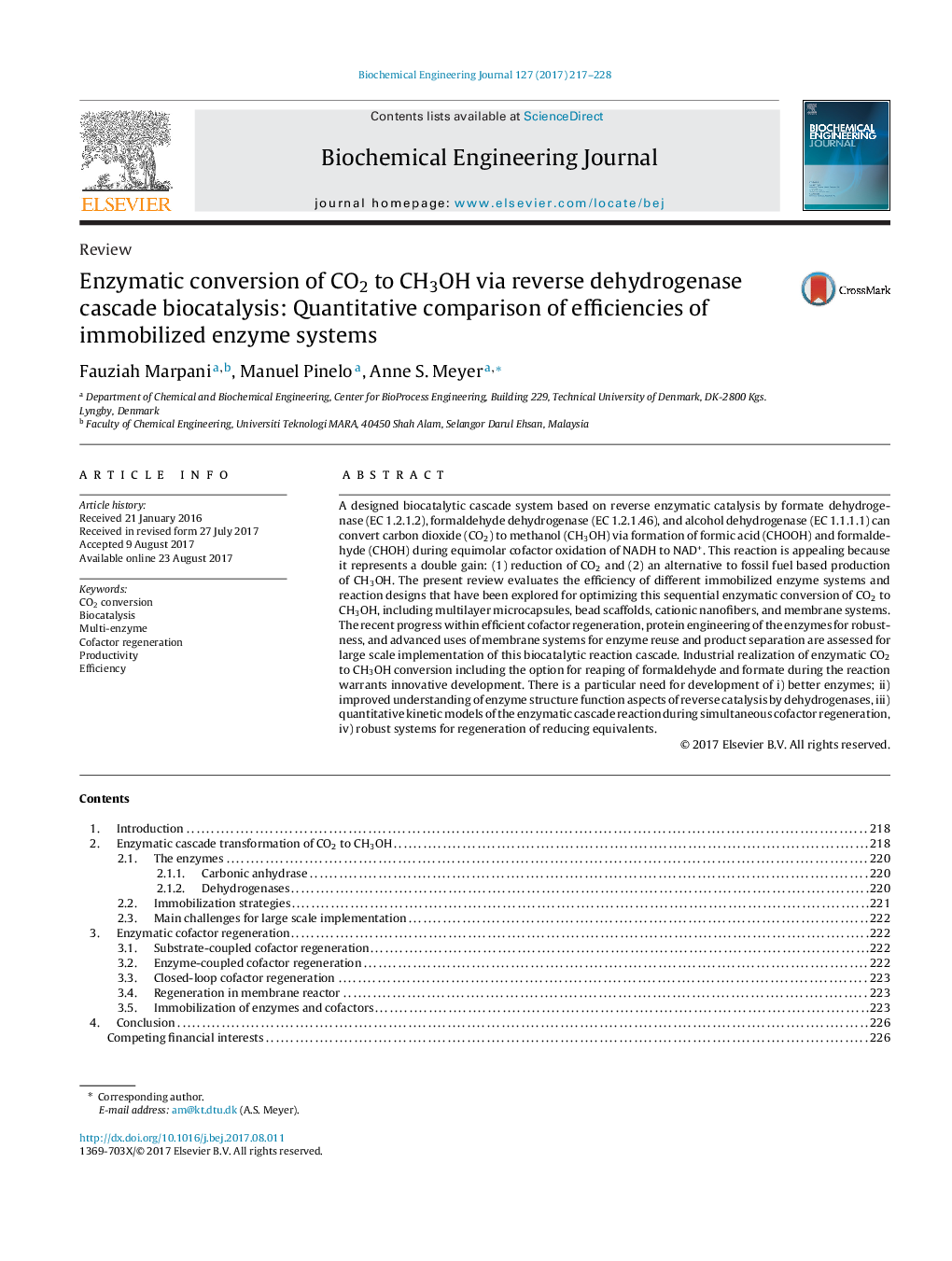| کد مقاله | کد نشریه | سال انتشار | مقاله انگلیسی | نسخه تمام متن |
|---|---|---|---|---|
| 4752058 | 1415988 | 2017 | 12 صفحه PDF | دانلود رایگان |

- Quantitative comparison of immobilized enzyme systems for conversion of CO2 to CH3OH.
- Kinetic parameters for the forward and reverse enzymatic reactions.
- Enzyme reactor systems for the enzymatic redox reaction cascade CO2 to CH3OH.
- Coupled redox biotransformation reactions.
- Efficiency of co-factor regeneration systems.
A designed biocatalytic cascade system based on reverse enzymatic catalysis by formate dehydrogenase (EC 1.2.1.2), formaldehyde dehydrogenase (EC 1.2.1.46), and alcohol dehydrogenase (EC 1.1.1.1) can convert carbon dioxide (CO2) to methanol (CH3OH) via formation of formic acid (CHOOH) and formaldehyde (CHOH) during equimolar cofactor oxidation of NADH to NAD+. This reaction is appealing because it represents a double gain: (1) reduction of CO2 and (2) an alternative to fossil fuel based production of CH3OH. The present review evaluates the efficiency of different immobilized enzyme systems and reaction designs that have been explored for optimizing this sequential enzymatic conversion of CO2 to CH3OH, including multilayer microcapsules, bead scaffolds, cationic nanofibers, and membrane systems. The recent progress within efficient cofactor regeneration, protein engineering of the enzymes for robustness, and advanced uses of membrane systems for enzyme reuse and product separation are assessed for large scale implementation of this biocatalytic reaction cascade. Industrial realization of enzymatic CO2 to CH3OH conversion including the option for reaping of formaldehyde and formate during the reaction warrants innovative development. There is a particular need for development of i) better enzymes; ii) improved understanding of enzyme structure function aspects of reverse catalysis by dehydrogenases, iii) quantitative kinetic models of the enzymatic cascade reaction during simultaneous cofactor regeneration, iv) robust systems for regeneration of reducing equivalents.
100
Journal: Biochemical Engineering Journal - Volume 127, 15 November 2017, Pages 217-228